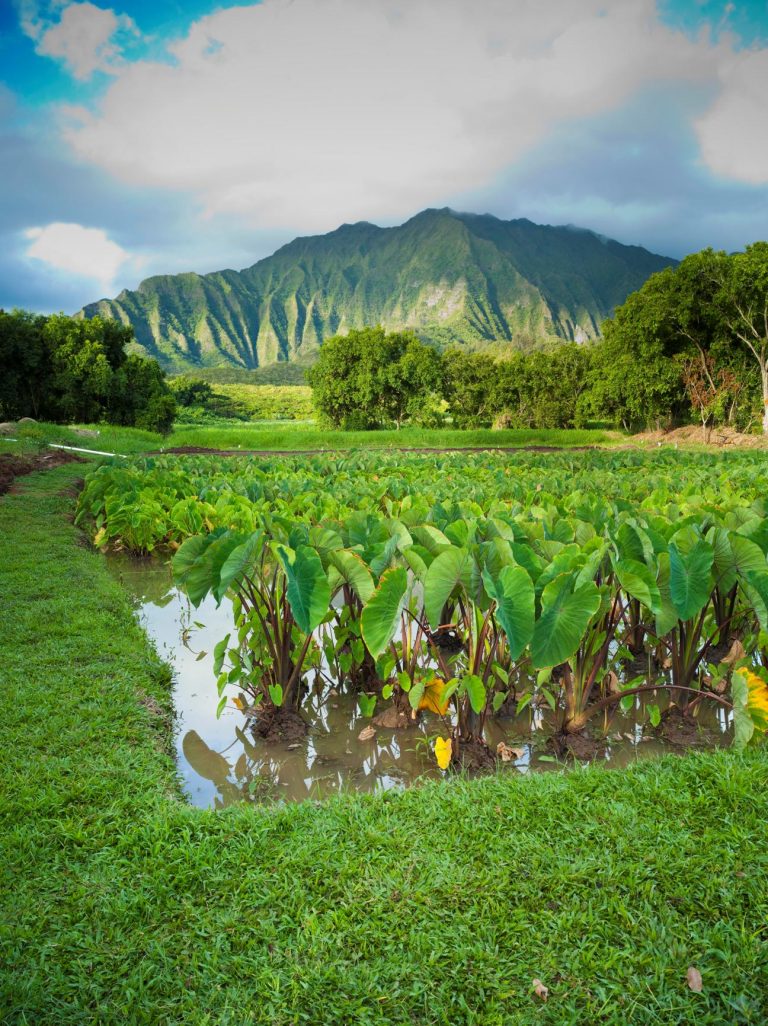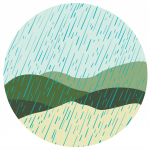- Home
- Critical Decade
- HI Climate Action
- HI Commission
- HI Resources
- HI Equity
- HI Events
Less & Heavy Rain
WHAT’S HAPPENING NOW?
Hawai‘i is getting drier. Rainfall and streamflow have declined significantly over the past 30 years. 90% of the state is receiving less rainfall than it did a century ago, with a particularly dry period beginning in 2008 through the present. In 2010 alone, more than 40% of the state experienced severe, extreme, or exceptional drought conditions. Since 2006, there have been no rainy seasons with above-average precipitation, but 10 rainy seasons with below-average precipitation. The number of consecutive dry days (leading to water shortages and overburdened irrigation systems) and consecutive days of extreme heavy rainfall (leading to increased runoff, erosion, and flooding), have been increasing. Tracking rainfall has been an essential part of living in Hawaiʻi for centuries, but changes in weather patterns are making predictive models increasingly inaccurate, representing a significant challenge for agriculture and storm-planning. Historic rainfall patterns can be viewed on the Hawaiʻi Climate Data Visualization portal here.

WHAT DOES THIS MEAN FOR HAWAIʻI?
PARTS OF HAWAIʻI ARE GETTING DRIER. Average yearly rainfall is declining across all the islands. The Big Island is experiencing more prolonged dry spells than ever. Coffee farmers, who normally rely on rainfall to water their crops, have started buying public water, drawn from groundwater, for irrigation. But they are still experiencing overall crop losses.
WHEN WE DO GET RAIN, WE GET IT ALL AT ONCE. And that means more landslides, runoff, algae blooms, erosion, and flooding. Remember the “rain bomb” on Kaua‘i in April 2018, where 50 inches of rain fell in 24 hours and cut off a whole community for months?
FLOODS ARE CREATING ECONOMIC AND PUBLIC HEALTH RISKS. The number of floods per year has increased sharply since the 1960s and is expected to keep rising. In Honolulu alone, high tide flooding has increased from 6 days per year to 11! Floods cause water contamination, damage to infrastructure, and put people and their houses at risk. Public institutions face increasing challenges and costs to mitigate the risk of floods.
WHAT’S COMING?
More El Niño (ENSO) years caused by warming seas will bring more intense periods of drought and heavy tropical storms. Less rainfall will put our drinking water supply at risk. This means less groundwater, more risk of drought, and increased risk of wildfires. For example, 80% of Maui’s drinking water comes from the Na Wai Eha watershed, which is experiencing significant decreases in average annual rainfall. More ENSO years and extreme weather events will threaten the reliability of aquifers on all islands. This means increased stress on local agriculture, water infrastructure, and the wellbeing of humans, plants, and other animals. By the end of the century, rainfall is predicted to decrease up to 30% in wet areas, and 60% in dry areas, threatening native ecosystems which already comprise less than half of the State’s landscape. This could lead to the extinction of hundreds of endangered species found only in Hawaiʻi. This will further compound risks to both the built and natural environment from increased runoff, erosion, and flooding, potentially making traditional adaptation strategies antiquated.
Efforts at mitigating and adapting to changes in rainfall will need to incorporate indigenous understandings of living with drought, and switching to dryland agriculture, along with other strategies to live with unprecedented weather patterns.
